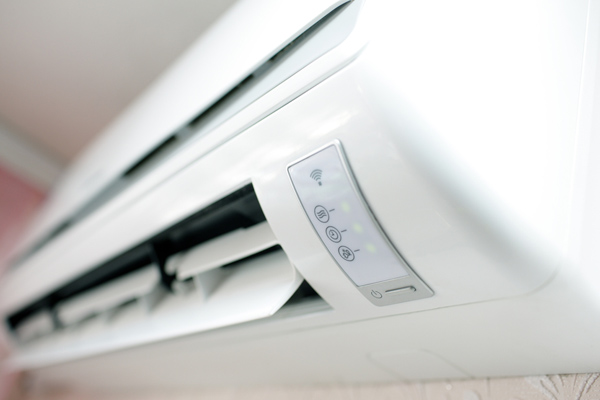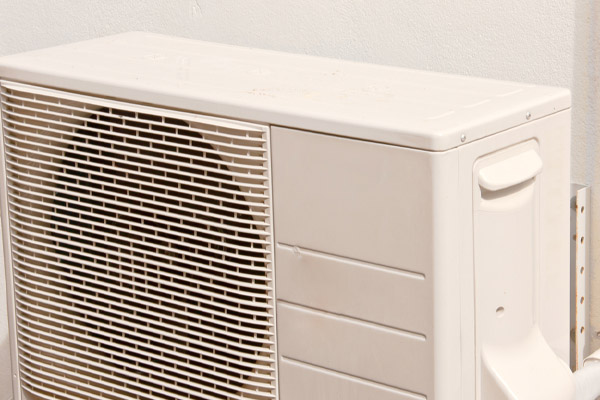How Do Ductless Air Conditioners Work?

Ductless air conditioners do not require ducts, unlike central air conditioners. Like central cooling systems, ductless systems suck in the warm air to cool a certain area. It also absorbs moisture and heat from the air and dumps them outside. Ductless air conditioners deliver cold air directly into the targeted area. On the other hand, central air conditioning systems utilize ductwork to distribute cold air throughout your entire home. Still, many homeowners ask, “How Do Ductless Air Conditioners Work?”
How Do Ductless Air Conditioners Work?
Table of Contents [hide]
Here is all you need to know regarding this topic:
Parts Of A Ductless Air Conditioner

Ductless air conditioners have three primary parts. These are:
- Evaporator/Blower Unit – The ductless air conditioner’s evaporator or blower unit is placed inside the house, in the room that needs cooling. These components are usually thin and around three feet long. They work by pulling in the warm air in the room, absorbing the heat and moisture. The cold air is then channeled back into the room. These units direct cold air into the room while also sending the heat and moisture outside via the ‘conduit’ at the same time.
- Conduit – This component links the internal part of the air conditioner to the external component. The conduit is a thin and long cable that consists of a power cable, refrigerant tubing, and condensation drain. It provides electrical power to the ductless unit’s indoor and outdoor parts. Moreover, it is also the channel through which heat and moisture pulled from inside your house pass through towards the condenser, where they will be removed.
- Condenser – This is the ductless air conditioner’s ‘outside’ component. Its job is to take all the heat from your house and ‘unload’ it outside.
Multi-Zone Ductless HVAC Vs. Single-Zone Mini-Split Setups
You might be wondering if ductless air conditioners are effective in multi-room applications. The good news is that they can work in single rooms and multi-zone spaces. Ductless air conditioners can be installed in various settings based on these two platforms:
- Multi-Zone Ductless HVAC: Two variants of multi-split ductless air conditioning systems are available. The first variant has a single outdoor condenser linked to several indoor evaporator/blower units. This configuration has each of the indoor units paired with a thermostat. All units are set off at the same time when cooling is needed, making it more cost-effective. This is ideal for structures where all rooms require different cooling loads.
- Single-Zone Mini-Split: A mini-split has one evaporator/blower unit and an outdoor condenser, making it ideal for cooling a single room. If there is enough room to set up several condensers, you can have multiple ductless air conditioners that work simultaneously to cool the whole building. This type of system allows you to customize temperature control in each zone. Moreover, if a single system malfunctions, the others won’t be affected.
You can choose to have a multi-zone mini-split system with detached compressor circuits linked to individual evaporator/blower units when you want a customizable ductless system that lets you have true zoning. This way, occupants in each zone can customize the temperature control settings per their preferences.
Do Ductless Cooling Systems Offer Sufficient Cooling Power?
Individual indoor units look small, but they are meant to cool one room or zone, making cooling easier. However, the BTU capacity needs to match the room size so that the unit can serve you effectively. As a general rule, bigger rooms require higher BTU ratings. It is best to have an HVAC contractor help you determine your home’s cooling load. They will factor in several aspects to find out what will work best for you.
If the system is too small for the given space, it will overwork to achieve the cooling requirements. This will cause the system to have faster wear and tear, meaning it will need more HVAC repairs. On the other hand, a system that’s too big will short-cycle. It will turn on and off frequently, shortening its service life. The common sizes include the following:
- A unit with 12,000 BTUs per house will work best for rooms measuring between 400 and 650 square feet.
- Rooms measuring between 600 and 1000 square feet need a unit with 18,000 BTUs per hour.
- Larger rooms with a measurement of 800 to 13,000 square feet require a unit that provides 24,000 BTUs per hour.
Contact your local, licensed HVAC contractor to learn more about ductless air conditioning systems.
Ductless Air Conditioners’ Advantages & Disadvantages

The following are the pros and cons ductless cooling systems have:
Pros Of Ductless Air Conditioning Unit
- Ductless air conditioners have built-in zoning, allowing occupants in individual rooms to customize temperature control settings.
- Ductless air conditioners are energy efficient. Energy.gov states that duct leaks can waste as much as 20 to 30 percent of conditioned air. You don’t have to worry about such issues with ductless cooling systems.
- Ductless air conditioning units are an ideal and less expensive cooling system if your home isn’t already fitted with ductwork. Many older homes do not have the space to install new or additional ducts. Moreover, installing ductwork often requires cutting through ceilings, floors, and walls. This means that the installation can be a long and expensive one.
- Ductless air conditioners are versatile as an HVAC contractor can mount them on the walls, floor, or ceilings, depending on your home’s configuration.
Cons Of Ductless Cooling Systems
- Ductless air conditioners usually have a high upfront cost, but they are generally more energy-efficient and customizable. Remember that the associated ductwork can mean a sizable increase in a central air conditioner’s upfront price, making this system costlier than a ductless system of a similar size.
- Ductless air conditioners are usually mounted on the floor, ceiling, or wall, unlike central units that can be hidden in the attic, basement, or closet. Ductless systems might be difficult to hide, but they are usually sleeker and less obtrusive than window air conditioners.
Conclusion
Ductless air conditioners offer many benefits. They are versatile, energy-efficient, and customizable. They also mean you don’t need an air distribution duct, making them cheaper to install and maintain overall than central air conditioners.
Call Hart Home Comfort For All Of Your HVAC Requirements
 Hart Home Comfort offers high-quality heating and cooling services in Nassau County, Suffolk County, and Queens, New York. We have the best professionally certified technicians for your HVAC service needs, including maintenance, replacements, installations, and repairs. Each of our techs is skilled, experienced, and knowledgeable to service any HVAC system correctly.
Hart Home Comfort offers high-quality heating and cooling services in Nassau County, Suffolk County, and Queens, New York. We have the best professionally certified technicians for your HVAC service needs, including maintenance, replacements, installations, and repairs. Each of our techs is skilled, experienced, and knowledgeable to service any HVAC system correctly.
Our company has highly competitive HVAC service prices in the area. Our tune-up services help enhance your home comfort and increase energy efficiency while reducing your energy expenses. If you need an HVAC repair or replacement system, we can recommend the most suitable one within your budget. We back all of our work with a guarantee. Schedule a service appointment and call Hart Home Comfort today. We offer free, in-home estimates.
For any questions about what Hart Home Comfort can do for you, give us a call today. Click here to contact us now or call us at (631) 667-3200 to find out more!